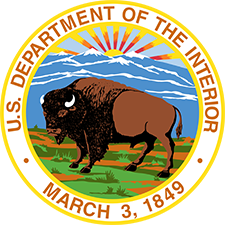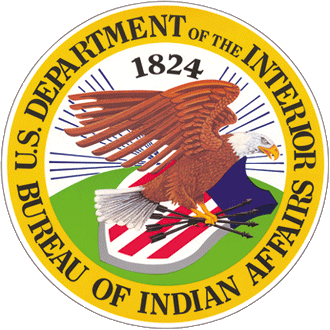The Missing and Murdered Unit was established to focus on analyzing and solving missing, murdered and human trafficking cases involving American Indians and Alaska Natives. Investigators and other specialists work to leverage Tribal, federal, state, and local law enforcement agencies and other stakeholders to enhance the criminal justice system and address the legitimate concerns of Native communities regarding missing and murdered people – specifically missing and murdered indigenous women and girls.
The Missing and Murdered Unit is unique in that it has the ability to marshal law enforcement resources across the BIA Office of Justice Services and was given an expanded ability to collaborate efforts with other agencies, such as enhancing the DOJ’s National Missing and Unidentified Persons System commonly known as NamUs, and developing strategic partnerships with additional stakeholders such as the FBI’s Behavioral Analysis Units, the FBI Forensic Laboratory, the US Marshals Missing Child Unit and the National Center for Missing and Exploited Children.
In addition to reviewing unsolved cases, the MMU works with Tribal, BIA and FBI investigators on unsolved missing and murdered investigations.
How the MMU Was Established
The MMU commands law enforcement resources across OJS and has expanded BIA’s ability to collaborate with other agencies working to solve unsolved cases. An important partner in this effort is the Federal Bureau of Investigation, which works closely with the MMU to coordinate a centralized intake process for missing and murdered case referrals and conducts investigative activities on current and previously unsolved investigations. The MMU also meets frequently with Tribal, state and county law enforcement programs to discuss case referrals received by the MMU or the FBI.
MMU's Workforce and Responsibilities
Headquartered in Albuquerque, New Mexico, the MMU is continuing to hire experts to conduct stakeholder collaboration, develop policy, and provide oversight of agents conducting field investigations. Since 2021, 26 MMU offices across 15 states have opened and are staffed by at least one MMU agent.
| 2024 MMU Field Office Locations and Assigned Agents | |
|
|
The Unit is responsible for:
- Gathering intelligence on active missing and murdered cases,
- Reviewing and prioritizing cases for assignment to investigative teams,
- Developing investigative plans to guide investigators,
- Identifying any outside resources that could benefit their investigative efforts and coordinating those resources with their investigative team,
- Managing tips submitted to Tip411, the Cold Case email and 1-800 line
- Assigning and investigating cases,
- Coordinating with other stakeholders,
- Preparing investigative reports,
- Analyzing current missing-person protocols, and
- Developing missing-person response guidelines.
The Unit is led by a unit chief who is responsible for stakeholder collaboration, ongoing policy development and overall performance of the unit.
- Supervisory special agents assist the unit chief by providing day-to-day supervision of the special agents in the field.
- Program analysts develop the collection and analysis of performance data.
- Program specialists coordinate administrative and programmatic responsibilities.
- Victim specialists to help coordinate services with the families of victims.
- Evidence technicians assist agents with crime scene processing, evidence collection, and use of crime scene mapping stations and ground-penetrating radar.
Milestones Achieved by the MMU in 2023
The MMU formalized its standard operating procedures for conducting investigations.
With six victim specialists nationally, the MMU Victim Services Program reached full staffing to support victim’s families. While the program has the potential to grow based on the number of cases within a locality, this critical program is now better positioned to support families, agents, and others in need of victim services.
- The MMU established a case intake process that standardizes how agents receive and review cases for solvability and investigation.
The MMU began developing a cloud-based Solution Trust Accountability Tracker, or STAT, to catalogue standard information on missing person, murder, and human tracking, cases related to American Indians and Alaska Natives.
STAT uses a customized intake form to collect and maintain pertinent case information on incident type, location, victim demographics, jurisdiction, and status.
STAT will allow the MMU to track spatial and temporal trends in unresolved cases and facilitate the exchange of information with other BIA offices, Tribal criminal investigation programs, and the FBI through a web-based platform.
The MMU plans to use this information to help inform suspect identification and to broaden public awareness of the crisis facing indigenous communities.
- The MMU obtained four crime scene mapping stations that capture live 3-D imagery to regenerate crime scenes. This technology allows investigators to review the scene at a later date and provides images that can be used during criminal proceedings to show crime scenes as they were the day the images were taken.
- The MMU Expanded the use of open-source intelligence platforms to assist with finding persons or investigative leads.
- The MMU has a dedicated DNA/Genealogy Crime Lab to support investigators when needed, expediting case investigations. The MMU shares these services with other OJS criminal investigators and Tribal law enforcement departments that are investigating cases involving missing or murdered American Indians and Alaska Natives.
- In partnership with the BIA/OJS US Indian Police Academy, the MMU is providing training to MMU, OJS criminal agents, Tribal investigators, and other police agencies who provide law enforcement services to Indian Country. This training covers how to identify cases for review, prioritize cases, conduct systematic preliminary and agency file reviews, and identifies solvability factor matrices.
The MMU is providing additional training on how to use equipment that supports field investigations, such as underwater camera/sonar, ground-penetrating radar, and crime scene mapping systems
MMU's Capabilities
Since the MMU was established, it has invested in and implemented several new technologies and developed additional capabilities to assist in finding evidence and closing cases. These include:
- Purchasing and providing training on how to use ground-penetrating radar and underwater camera/sonar and robotic arm. Ground penetrating radar provides imagery of what lies underground, which may be used to assist with finding evidence, human remains, etc.
- Working with families to explain the complicated legal process that occurs as a case develops into a prosecutable case for submission to the Tribal and federal courts. This provides families and next of kin with a better understanding of why case information cannot always be shared while an active case is developing.
- Bringing humanity to the cases by helping investigators understand what families need throughout the process.
- Communicating to families that the ultimate goal of all the parties is to hold offenders accountable to bring justice and closure for a family.
Additional Information
Additional Resources
Contact Us
Washington, DC 20240


